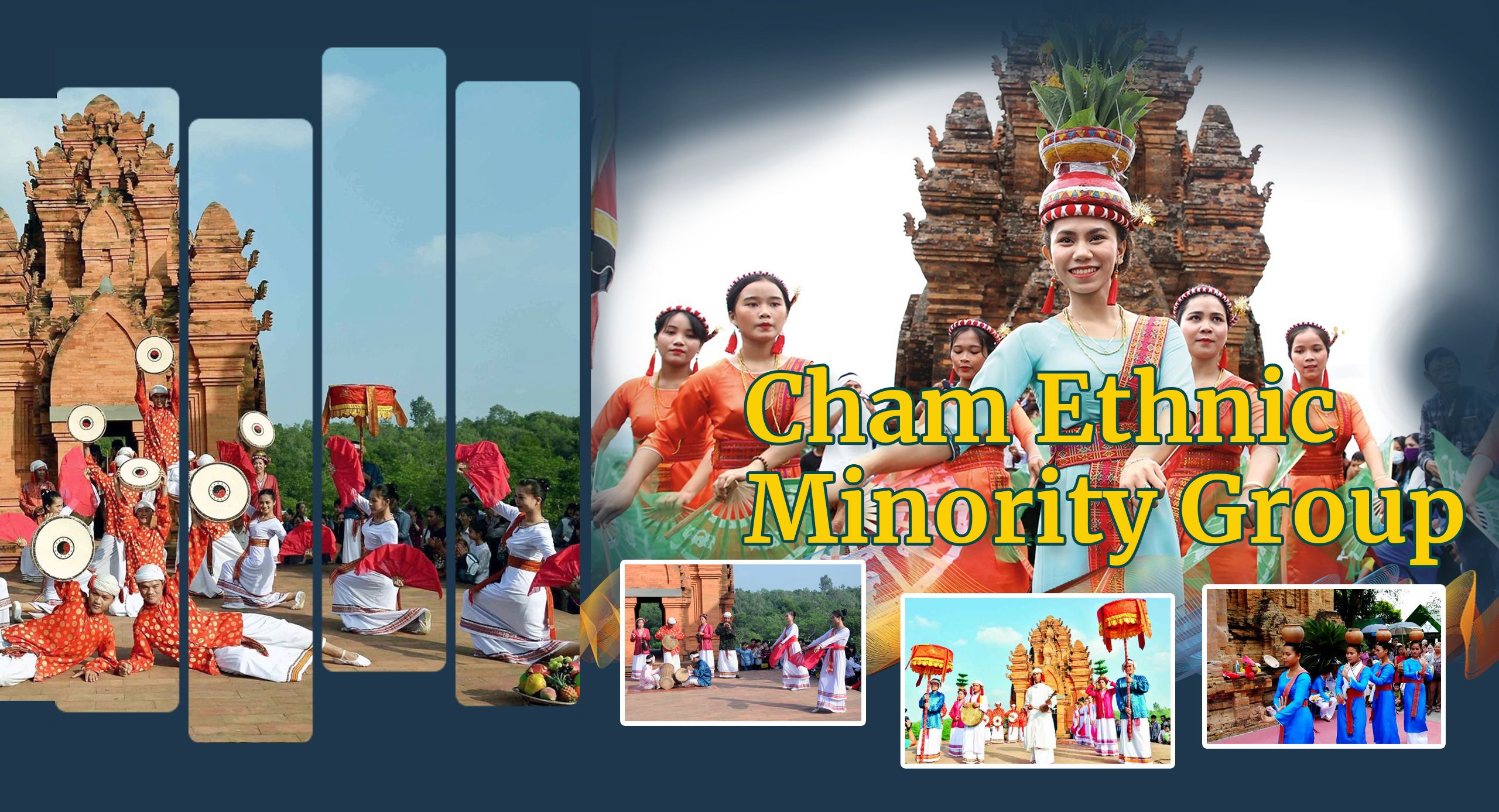
Other names: Chiem, Chiem Thanh, Champa, Hroi, and Hoi.
Language: Categorised as a Malayo-Polynesian language (a subgroup of Austronesian languages).
Residence: The Cham people live in Ninh Thuan Province and Binh Thuan Province.
History: Cham ethnic minority group have lived on the central coast of Vietnam for a long time, creating a brilliant culture with a profound influence from Indian culture. The Cham people built the Champa kingdom from as early as the 17th century.
Cham ethnic group
The Cham are one of five ethnic groups in Vietnam that speak Malayo-Polynesian languages. Other names for the Cham include Chiem, Chiem Thanh, Champa, Hroi, and Hoi.
Origin
The Cham ethnic minority group has lived on the central coast of Vietnam for a long time, creating a brilliant culture with a profound influence from Indian culture. The Cham people built the Champa kingdom as early as the 17th century.
Currently, residents consist of two main parts including those living in Ninh Thuan Province and Binh Thuan Province, most of them are Brahmins (a small portion of the Cham here follow the traditional Islamic faith of Muslims). Meanwhile, other groups of Cham residents living in Chau Doc City (An Giang Province), Tay Ninh, Dong Nai and Ho Chi Minh City follow the new Islam.
Other names: Chiem, Chiem Thanh, Champa, Hroi, Hoi.
Local groups: Cham Hroi, Cham Poong, Cha Va Ku, Cham Chau Doc.
Population, language:
Population: According to census data on 53 ethnic minorities as of 1 April 2019, the total population of Cham ethnic people is 178,948, including 87,838 men and 91,110 women. 83.8% of the population live in rural areas.
Language: The language belongs to Malayo-Polynesian language (a subgroup of Austronesian languages).
Geographical distribution
Cham people live in Ninh Thuan Province and Binh Thuan Province.
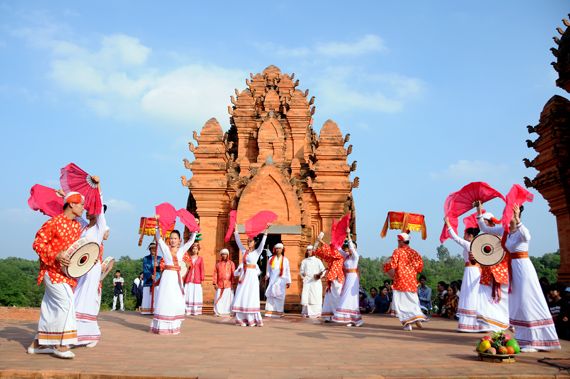
Main features
Food: Cham people eat rice cooked in large and small earthenware pots. Food includes fish, meat, and vegetables that are mainly hunted, raised, and farmed by themselves. Drinks include ruou can (tube wine) and rice wine. The custom of chewing betel and areca nut is very popular in daily life and traditional rituals and customs.
Costumes: Men and women are all wrapped with their traditional skirts. Men wear short button-down blouses, while women wear long tunics. The main colour of their costumes is the white of the cotton fabric. In daily life today, many Cham people dress like other Vietnamese in the central region.
Social relation: The Cham family carries a matrilineal tradition, although the former Cham society was a class and feudal society. In the regions where Cham people follow Islam, although the families have changed to patriarchy, matriarchal practices still exist in the family relations and ancestor worship.
Cham residents were divided into two clans including Cau and Dua like the Niee and Mlo lineages of the Ede ethnic group. Later, the Cau clan became a popular class while Dua became the class of the aristocrats and clergy.
Traditional Cham society is classified into castes like ancient Indian society. They have their own residential areas and have clear separations, including no marriage relationship, no shared neighbourhood, and no same tray.
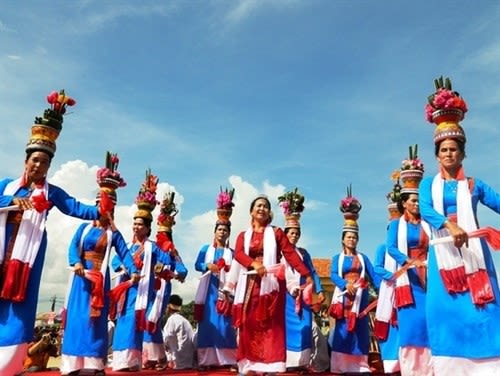
Housing: Cham people live in houses with no upstairs. Each family has houses built close to each other in an orderly manner: guest house, house of parents and young children, house of married girls, kitchen, and custom house in which there is a storehouse, the wedding room, and the residence of the youngest couple.
Marriage: Women take the initiative in the relationship with men. After the marriage, the couples reside on the wife's house, and children are born with their mother's family name. The wedding ceremony is prepared by the bride's family.
Funeral: Cham people have two forms of bringing the dead to the afterlife: burial and cremation. The Brahmin population usually use cremation according to canon law, while other residents apply cremation method. People in the same family line are buried in the same place according to their mother's bloodline.
Festivals: People perform many annual agricultural rituals, including le khai muong dap dap (the ceremony to open ditches to build dams), le mung lua con (the celebration of new rice), and le ha dien (rituals worshiping agricultural gods). However, the biggest festival is Bon Kate Festival, which is celebrated in temples in the middle of the tenth lunar month.
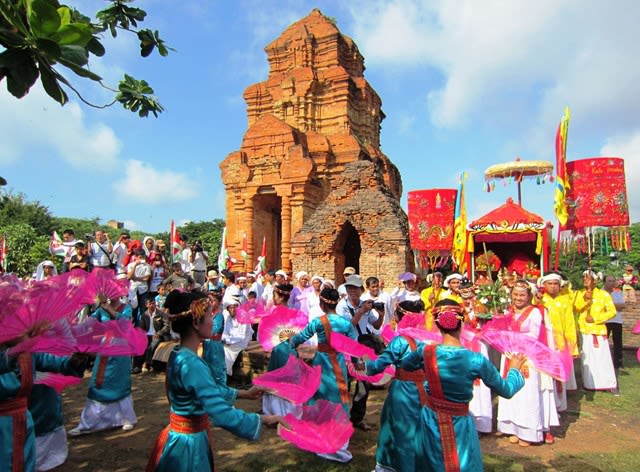
Calendar: Cham people have a traditional agricultural calendar calculated according to the lunar calendar.
Arts: Popular musical instruments of Cham people include the Paranung skin drum, slap drums, and xaranai trumpets. Ancient Cham folk music has left many influences on the ancient Vietnamese folk music in the central region such as rice drum, Hue singing, etc. Cham folk dances are seen at temples and towers during Bon Kate Festival.
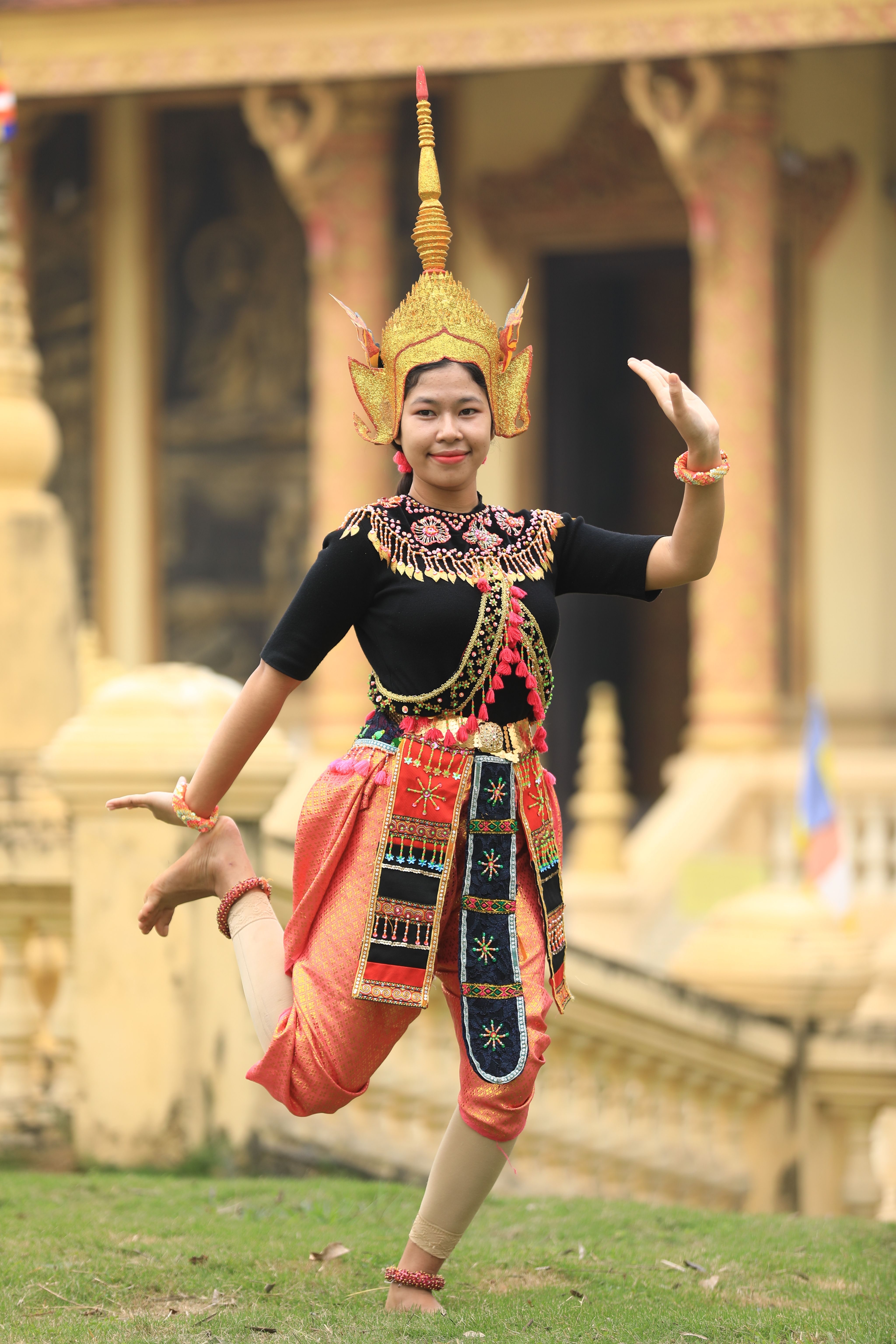
Photo: Thanh Dat
Photo: Thanh Dat
Economic conditions
The Cham people have a tradition of wet-rice agriculture and are skilled at irrigation, gardening, and growing fruit trees. In addition to wet farming, there is still a type of single-crop dry field on the mountainside. Meanwhile, the Cham people in the south live mainly by fishing, handicraft weaving, and small-scale trade.
Regarding crafts, the Cham people are famous for weaving silk and making pottery by hand and firing them on open-air kilns. The trade with neighbouring peoples has existed since ancient times. The central coastal area was once home to famous fleets of ships in history.